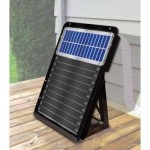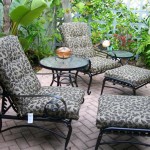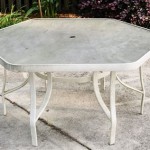Patio Herb Planter Ideas For Garden
Gardening, particularly herb gardening, in limited spaces such as patios, balconies, or small yards, is increasingly popular. The ability to cultivate fresh herbs within arm's reach not only enhances culinary experiences but also adds aesthetic appeal to outdoor living spaces. Efficiently utilizing available space and selecting appropriate planters are crucial for successful patio herb gardening. This article explores various patio herb planter ideas, offering insights into design considerations, plant pairings, and maintenance strategies to create thriving and visually appealing herb gardens.
One of the initial considerations when planning a patio herb garden is determining the available space and sunlight exposure. Understanding the amount of sunlight the patio receives throughout the day is essential for selecting herbs that will thrive in those conditions. Most herbs prefer at least six hours of direct sunlight, but some, like mint and parsley, can tolerate partial shade. Assessing the available space will also dictate the size and type of planters that can be accommodated without overcrowding the area or impeding access.
Before selecting any planter it's also very important to assess the drainage capabilities of the selected patio area. Excessive water run-off from poorly drained pots can damage or degrade surface areas, clog drains, or simply create an unwanted mess. In some cases, plants that require good drainage can develop root rot or other fungal and bacterial issues if allowed sit in standing water for too long.
Once the space and sunlight have been assessed, the next step is choosing the right planters. There are a multitude of options available, each with its own advantages and disadvantages. The choice will depend on personal preferences, budget, and the specific needs of the herbs being grown.
Types of Patio Herb Planters
Planters come in various materials, shapes, and sizes, each offering distinct benefits and drawbacks. The selection should be based on factors such as aesthetics, durability, weight, and drainage capabilities.
Terracotta Pots: Terracotta pots are a classic choice for herb gardens due to their porous nature, which allows for good air circulation and drainage. This is particularly beneficial for herbs that prefer drier conditions, such as rosemary and thyme. However, terracotta pots can dry out quickly in hot weather and may require more frequent watering. They are also relatively heavy, which can make them difficult to move once filled with soil.
Plastic Pots: Plastic pots are lightweight, durable, and come in a wide range of colors and styles. They are less expensive than terracotta pots and retain moisture better, which can be advantageous in hot climates or for herbs that require more consistent moisture, such as basil and chives. However, plastic pots can overheat in direct sunlight, potentially damaging plant roots. They also lack the breathability of terracotta, which can lead to waterlogging if not properly drained.
Ceramic Glazed Pots: Glazed ceramic pots offer a combination of aesthetic appeal and functionality. The glaze helps to retain moisture, similar to plastic pots, but they are generally more durable and resistant to fading. They also come in a variety of decorative designs and colors, allowing for greater personalization. However, glazed pots can be expensive and heavy, and the glaze can sometimes crack or chip over time.
Metal Planters: Metal planters, such as galvanized steel or aluminum, are durable and weather-resistant. They can add a modern or industrial touch to a patio herb garden. However, metal can heat up quickly in direct sunlight, potentially harming plant roots. It is important to choose planters with adequate drainage holes and to consider lining them with plastic or fabric to prevent the soil from coming into direct contact with the metal.
Wooden Planters: Wooden planters offer a natural and rustic aesthetic to an herb garden. They can be constructed from various types of wood, such as cedar, redwood, or pressure-treated lumber. Wood provides good insulation for plant roots and can help retain moisture. However, wooden planters are susceptible to rot and decay, especially if they are in direct contact with the soil. It is important to treat the wood with a sealant or liner to prolong its lifespan.
Self-Watering Planters: Self-watering planters are designed to provide plants with a consistent supply of water, reducing the need for frequent watering. They typically consist of a reservoir that holds water and a wicking system that draws moisture up into the soil. Self-watering planters can be particularly useful for busy gardeners or those who live in hot or dry climates. However, they can be more expensive than traditional planters and may not be suitable for all types of herbs.
Hanging Baskets: Hanging baskets are an excellent option for maximizing space on a small patio or balcony. They can be hung from railings, hooks, or brackets, adding vertical interest to the garden. Trailing herbs, such as thyme or oregano, are well-suited for hanging baskets. It is important to choose baskets with adequate drainage and to water them regularly, as they tend to dry out quickly.
Raised Garden Beds: For larger patios, raised garden beds offer a convenient and accessible way to grow herbs. They can be constructed from wood, metal, or composite materials and can be customized to fit the available space. Raised beds provide better drainage and soil control than in-ground gardens, and they can also make gardening easier on the back and knees.
Design Considerations for Patio Herb Planters
Beyond the type of planter, several design considerations can enhance the functionality and aesthetics of a patio herb garden. Factors such as planter placement, plant selection, and companion planting can contribute to a thriving and visually appealing garden.
Planter Placement: The placement of planters is crucial for ensuring that herbs receive the appropriate amount of sunlight and protection from the elements. Taller planters should be placed towards the back of the patio to avoid blocking sunlight from smaller plants. Consider the prevailing wind direction and place planters in sheltered locations if necessary. Grouping planters together can create a more cohesive and visually appealing display.
Plant Selection: Choose herbs that are well-suited to the climate and growing conditions of the patio. Consider factors such as sunlight exposure, temperature, and humidity. Select a variety of herbs with different textures, colors, and growth habits to create visual interest. For example, combining upright herbs like rosemary and sage with trailing herbs like thyme and oregano can create a dynamic and layered effect.
Companion Planting: Companion planting involves growing certain herbs together that benefit each other. For example, basil and tomatoes are a classic companion planting combination, as basil repels pests that can harm tomatoes. Mint can repel cabbage moths and ants, while chives can deter aphids and Japanese beetles. Researching companion planting combinations can help to improve plant health and yield.
Vertical Gardening: Vertical gardening is an excellent way to maximize space on a small patio. It involves growing plants on vertical structures such as walls, trellises, or hanging planters. Vertical gardens can be created using a variety of materials, such as repurposed pallets, stacked planters, or wall-mounted containers. They add visual interest and provide a unique way to display herbs.
Container Size and Soil: The size of the container should be appropriate for the size of the herb and its root system. Smaller herbs like thyme and chives can be grown in smaller containers, while larger herbs like rosemary and sage will require larger pots. Use a well-draining potting mix that is specifically formulated for containers. Avoid using garden soil, as it can become compacted and impede drainage.
Watering and Fertilizing: Herbs grown in containers require more frequent watering than those grown in the ground, as the soil dries out more quickly. Water deeply and regularly, especially during hot weather. Fertilize herbs regularly with a balanced, water-soluble fertilizer. Avoid over-fertilizing, as this can lead to leggy growth and reduced flavor.
Specific Herb and Planter Pairings
Certain herbs thrive in specific types of planters, creating aesthetically pleasing and functionally optimal pairings:
Mint in a Hanging Basket: Mint is a vigorous grower that can quickly spread and become invasive if planted in the ground. Growing mint in a hanging basket keeps it contained and allows its trailing stems to cascade gracefully. The basket should be lined with a water-retentive material to prevent the soil from drying out too quickly.
Rosemary in a Terracotta Pot: Rosemary prefers well-drained soil and a sunny location. A terracotta pot provides excellent drainage and air circulation, preventing the roots from becoming waterlogged. The pot should be large enough to accommodate the rosemary's mature size, as it can grow into a small shrub.
Basil in a Self-Watering Planter: Basil requires consistent moisture and warmth to thrive. A self-watering planter provides a steady supply of water, reducing the risk of the plant drying out. The planter should be placed in a sunny location and protected from strong winds.
Chives in a Ceramic Glazed Pot: Chives are a versatile herb that can be grown in a variety of containers. A ceramic glazed pot adds a touch of elegance to the herb garden and helps to retain moisture. The pot should have adequate drainage holes to prevent the soil from becoming waterlogged.
Thyme in a Shallow Bowl: Thyme is a low-growing herb that prefers well-drained soil and full sun. A shallow bowl or trough is an ideal container for thyme, as it allows the plant to spread and form a dense mat. The bowl should be filled with a sandy, well-draining potting mix.
Oregano in a Metal Planter: Oregano is a hardy herb that can tolerate a wide range of growing conditions. A metal planter provides a durable and weather-resistant container for oregano. The planter should be lined with plastic or fabric to prevent the soil from coming into direct contact with the metal.
Parsley in a Wooden Planter Box: Parsley prefers moist, well-drained soil and partial shade. A wooden planter box provides good insulation for the roots and helps to retain moisture. The box should be treated with a sealant or liner to prevent the wood from rotting.
Creating a patio herb garden is a rewarding endeavor that combines practicality with aesthetic appeal. By considering the available space, sunlight exposure, and the specific needs of each herb, it is possible to design a thriving and visually stunning garden that enhances the outdoor living experience. Careful selection of planters, strategic plant pairings, and consistent maintenance are key to ensuring a successful and bountiful harvest.

Ideas For Growing Herbs In Pots Garden Gate

25 Pretty Herb Garden Ideas Trees Com

How To Build A Vertical Herb Or Lettuce Planter Bonnie Plants

Diy Tiered Herb Garden Planter Jenna Sue Design

Herb Garden Designs With Plant Lists Gardener S Supply

Diy Tiered Herb Garden Planter Jenna Sue Design

How To Start A Balcony Herb Garden Access S

33 Best Herb Garden Ideas How To Start A

25 Pretty Herb Garden Ideas Trees Com

16 Container Gardening Ideas Potted Plant We Love
Related Posts








